Abstract
Isometrically contracting cat papillary muscles were studied. Muscle length was changed during diastole and returned to control just before the next contraction such that developed force was always measured at the same length. When the diastolic length was increased from a control length, systolic force at the control length increased slowly over several minutes. When the muscle was then held at the increased length, there was an immediate increase in systolic force followed by a small secondary slow increase. Conversely, a decrease in diastolic length from a control length resulted in a slow decrease in systolic force at the control length. When the muscle was then held at the decreased length there was an immediate decrease in systolic force followed by a small secondary decrease. No change in the time course of contraction accompanied the slow force changes after a maintained change of length or a change of diastolic length alone. The magnitude of the slow change of force was proportional to the duration of time in each diastole for which the length was altered and independent of the onset time of a given duration of diastolic length change. The contractility changes were not linearly related to the amplitude of the diastolic length changes. The potentiating effect of a given stretch was greater than the depotentiating effect of a similar release. The development of inotropic changes as a result of diastolic length changes occurred whether or not the muscle was stimulated during the period of the length changes.
Full text
PDF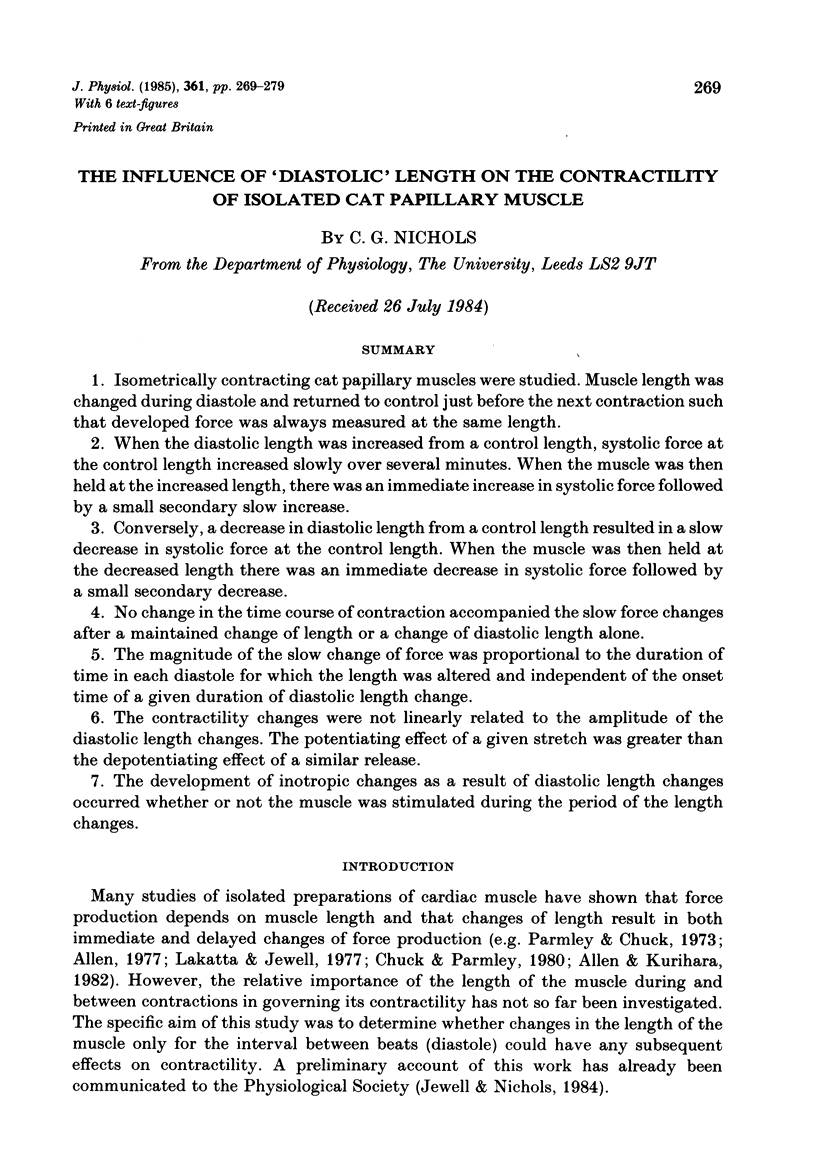
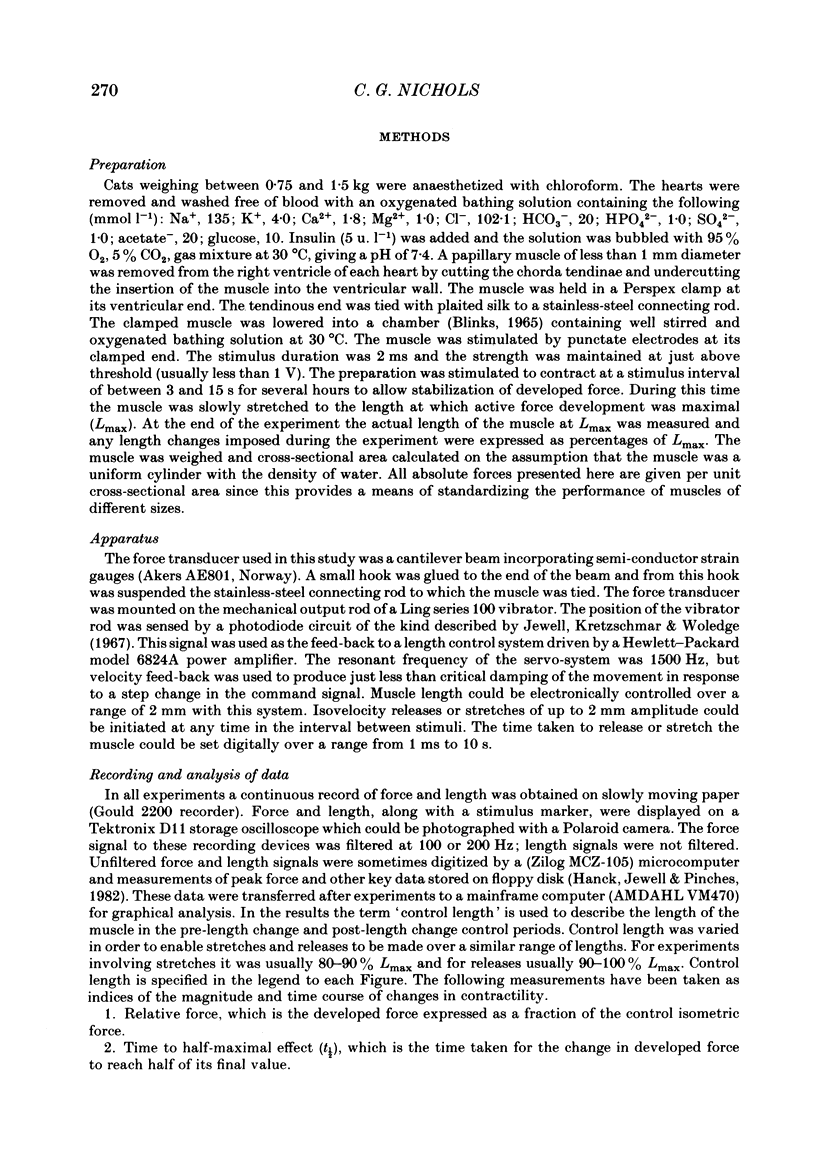
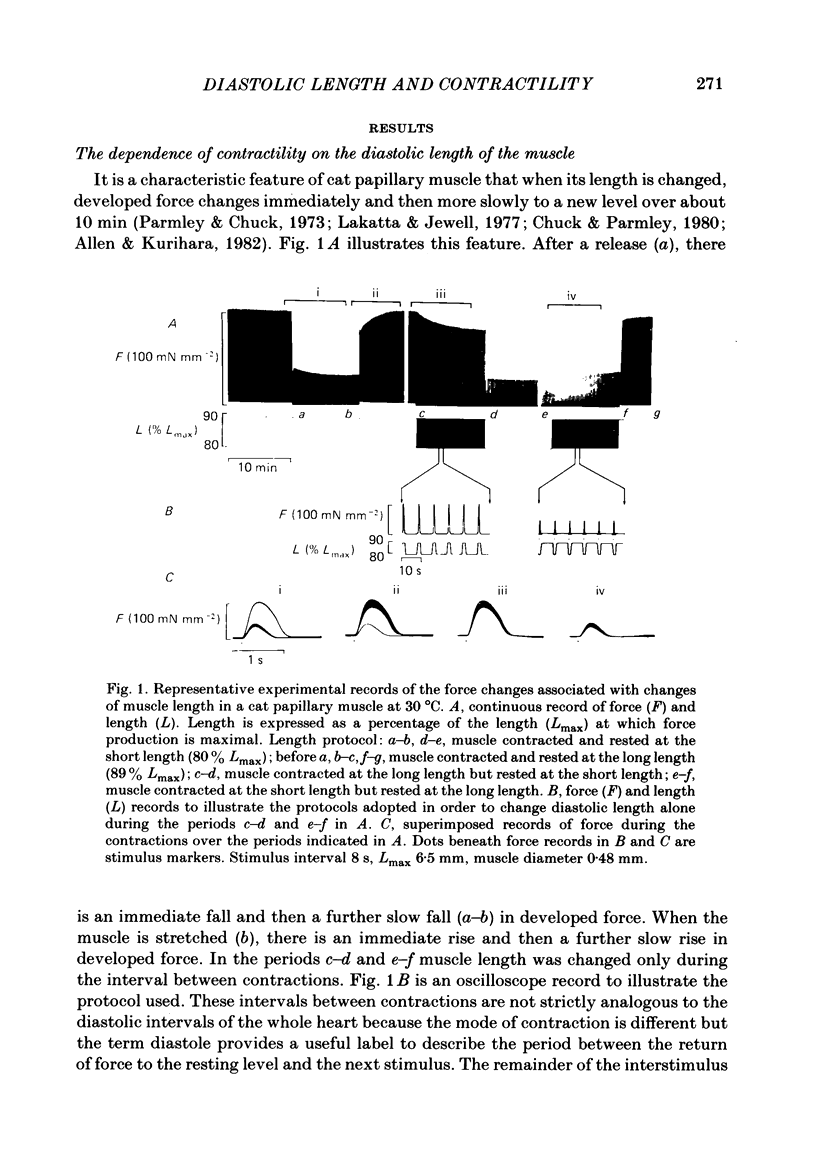
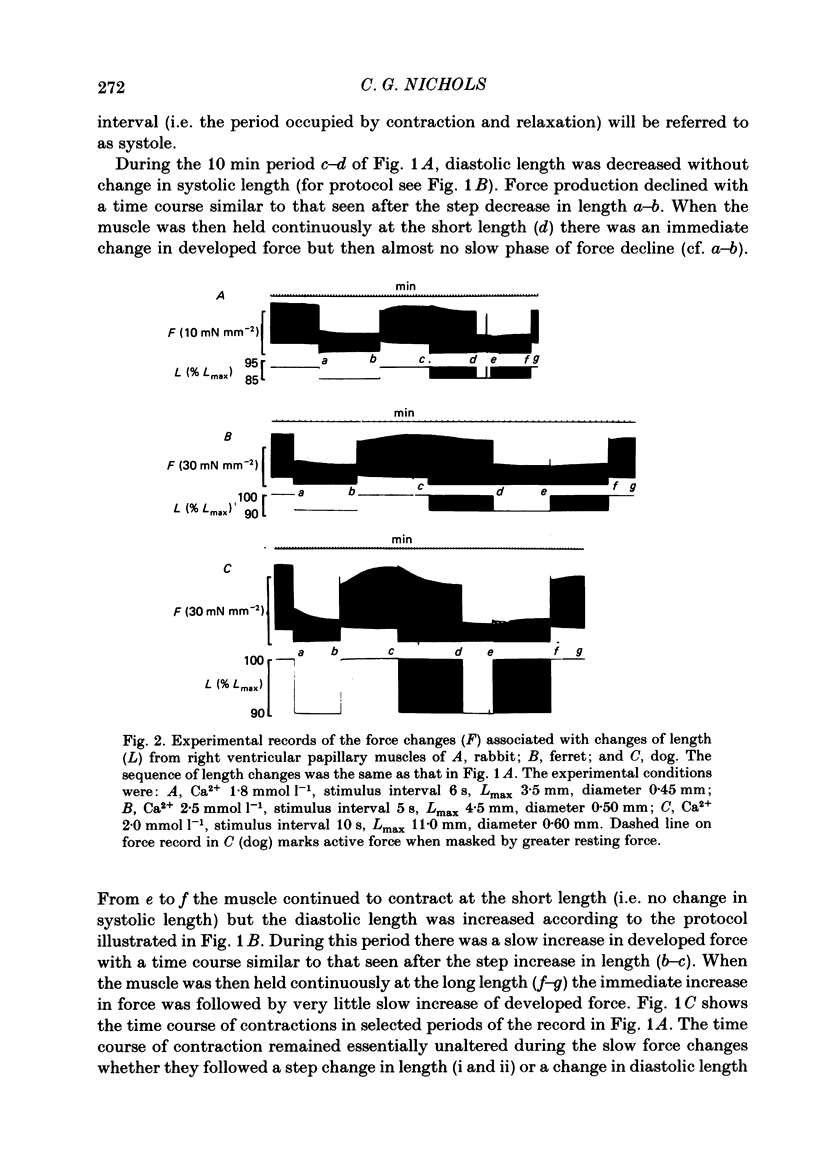
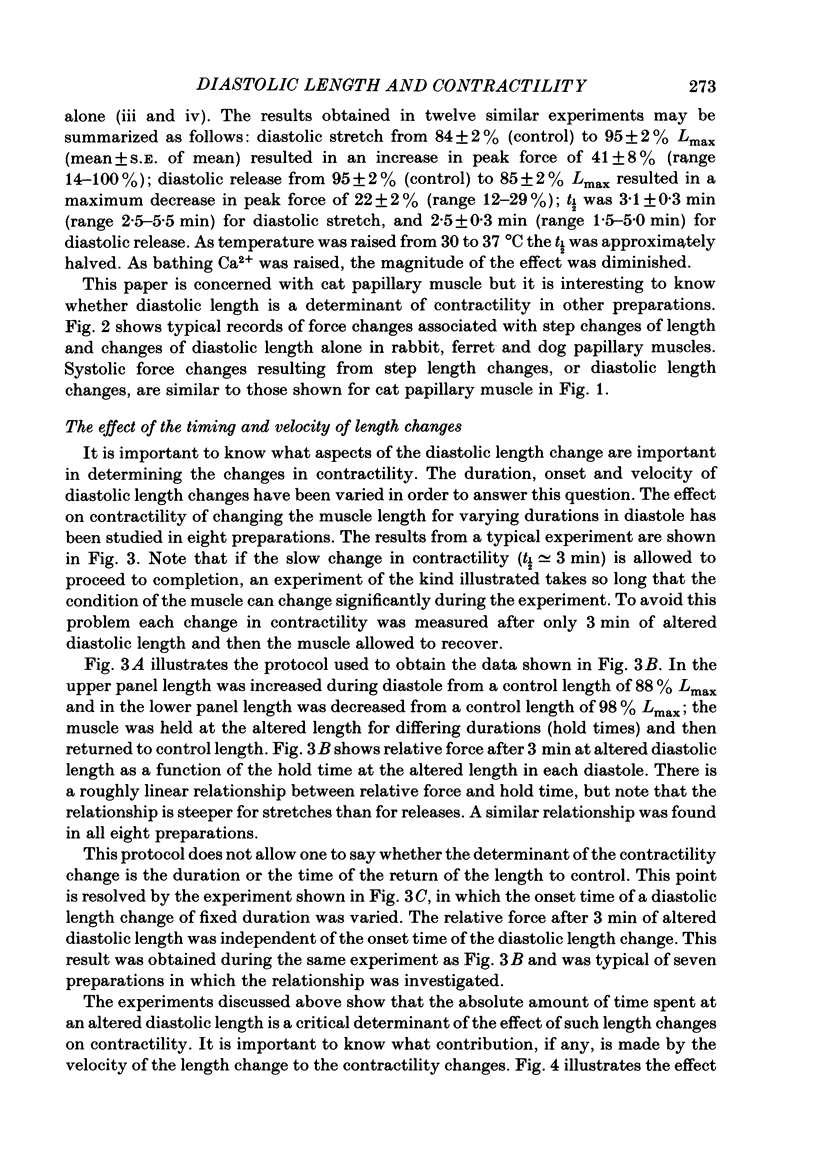
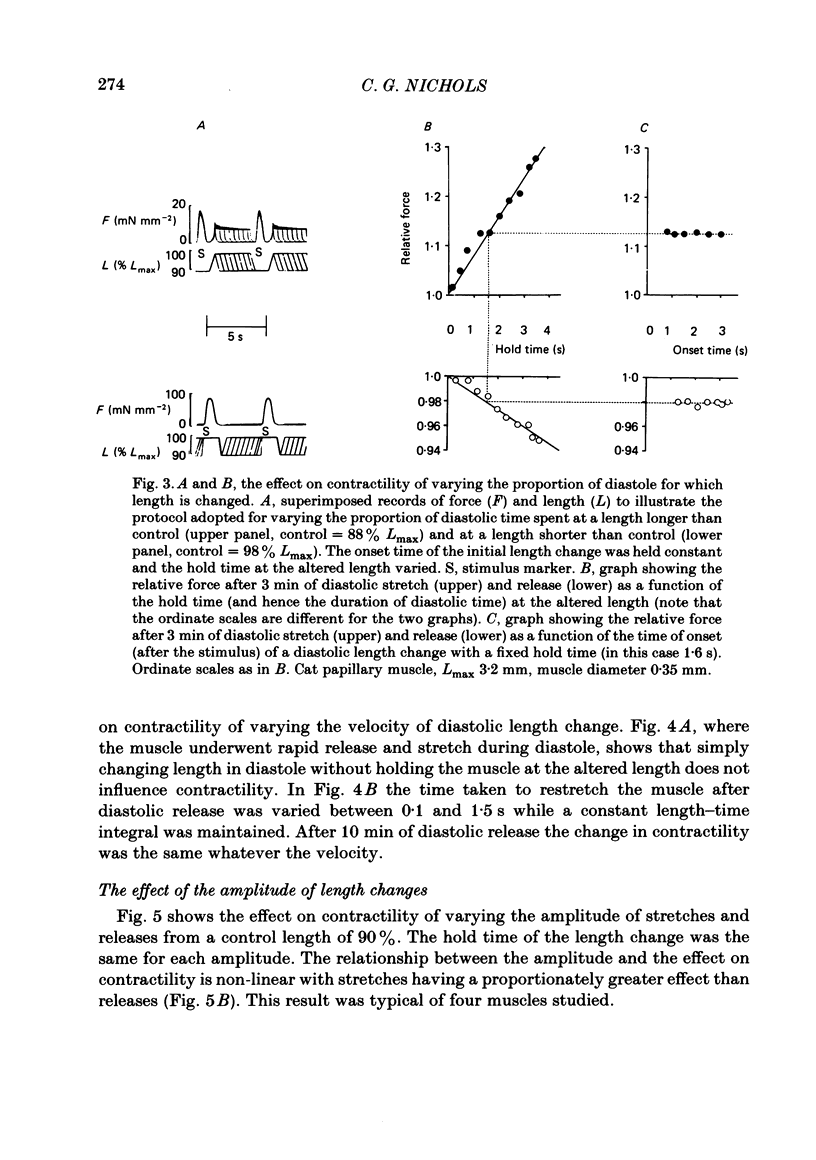
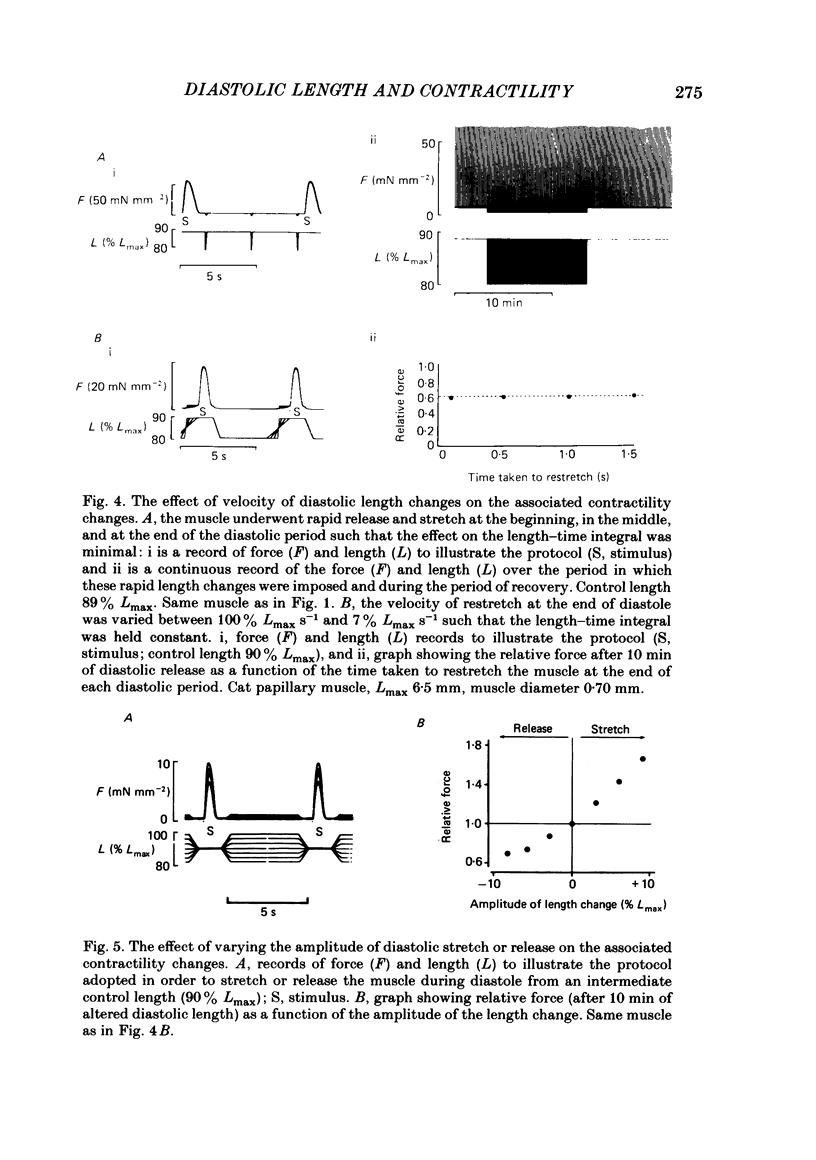
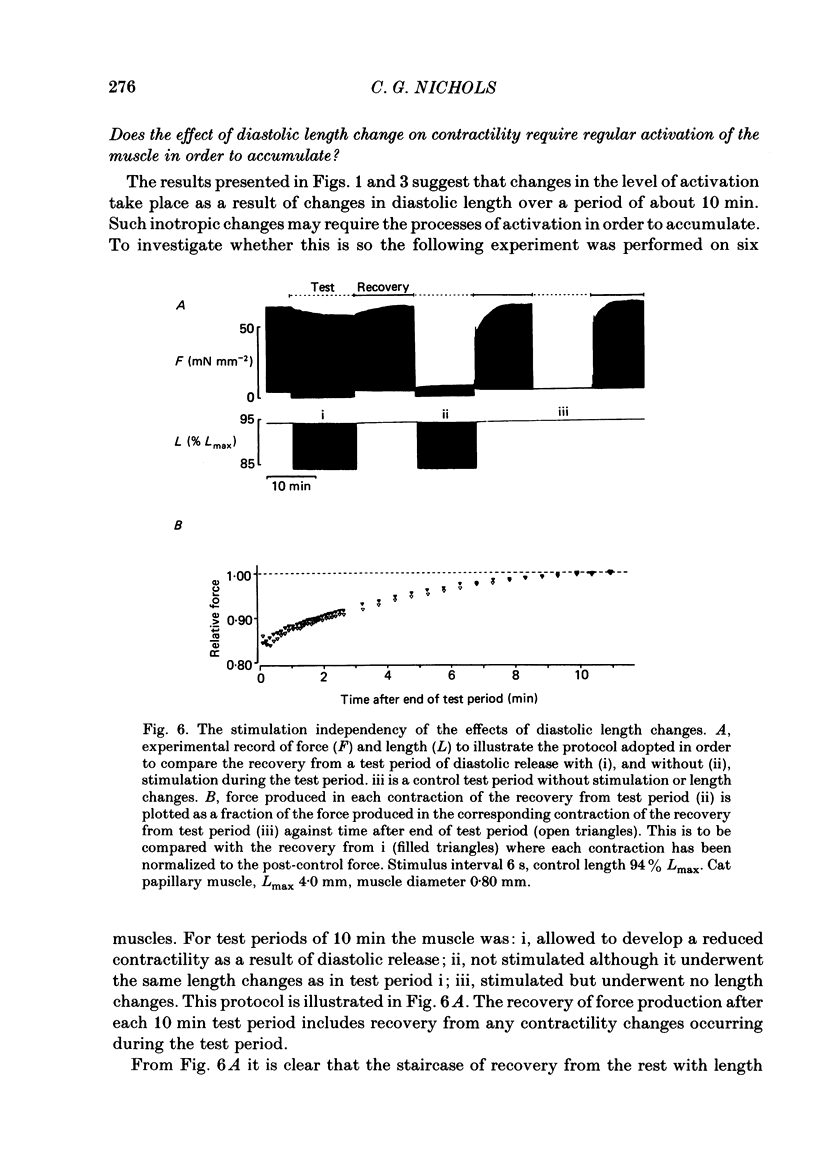
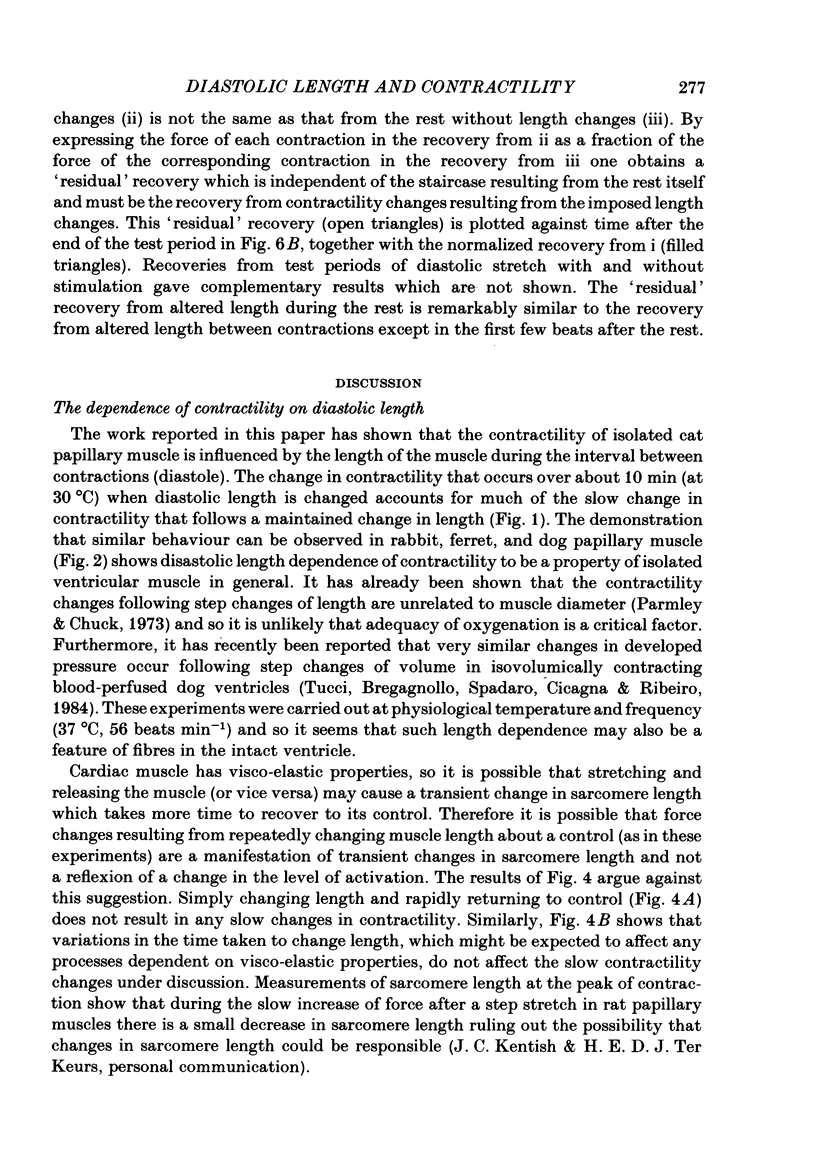
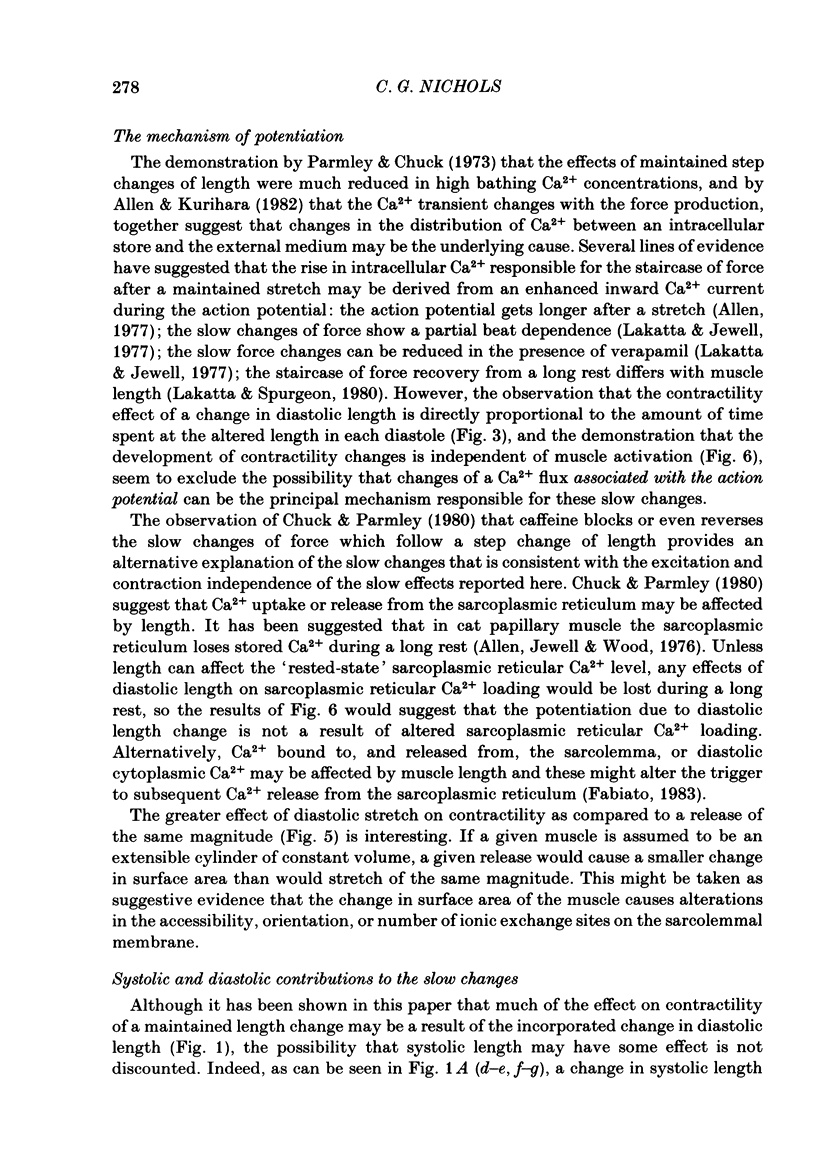
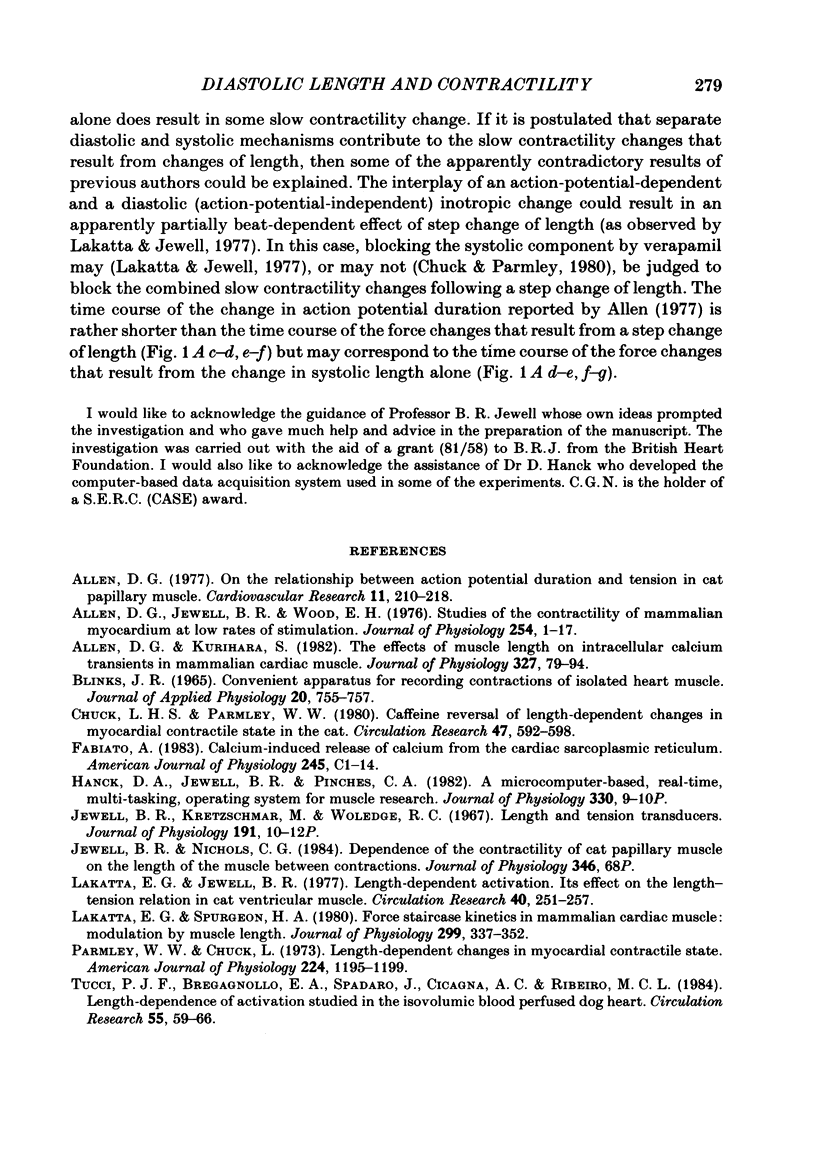
Selected References
These references are in PubMed. This may not be the complete list of references from this article.
- Allen D. G., Jewell B. R., Wood E. H. Studies of the contractility of mammalian myocardium at low rates of stimulation. J Physiol. 1976 Jan;254(1):1–17. doi: 10.1113/jphysiol.1976.sp011217. [DOI] [PMC free article] [PubMed] [Google Scholar]
- Allen D. G., Kurihara S. The effects of muscle length on intracellular calcium transients in mammalian cardiac muscle. J Physiol. 1982 Jun;327:79–94. doi: 10.1113/jphysiol.1982.sp014221. [DOI] [PMC free article] [PubMed] [Google Scholar]
- Allen D. G. On the relationship between action potential duration and tension in cat papillary muscle. Cardiovasc Res. 1977 May;11(3):210–218. doi: 10.1093/cvr/11.3.210. [DOI] [PubMed] [Google Scholar]
- Blinks J. R. Convenient apparatus for recording contractions of isolated heart muscle. J Appl Physiol. 1965 Jul;20(4):755–757. doi: 10.1152/jappl.1965.20.4.755. [DOI] [PubMed] [Google Scholar]
- Chuck L. H., Parmley W. W. Caffeine reversal of length-dependent changes in myocardial contractile state in the cat. Circ Res. 1980 Oct;47(4):592–598. doi: 10.1161/01.res.47.4.592. [DOI] [PubMed] [Google Scholar]
- Fabiato A. Calcium-induced release of calcium from the cardiac sarcoplasmic reticulum. Am J Physiol. 1983 Jul;245(1):C1–14. doi: 10.1152/ajpcell.1983.245.1.C1. [DOI] [PubMed] [Google Scholar]
- Jewell B. R., Kretzschmar M., Woledge R. C. Length and tension transducers. J Physiol. 1967 Jul;191(1):10P–12P. [PubMed] [Google Scholar]
- Lakatta E. G., Jewell B. R. Length-dependent activation: its effect on the length-tension relation in cat ventricular muscle. Circ Res. 1977 Mar;40(3):251–257. doi: 10.1161/01.res.40.3.251. [DOI] [PubMed] [Google Scholar]
- Lakatta E. G., Spurgeon H. A. Force staircase kinetics in mammalian cardiac muscle: modulation by muscle length. J Physiol. 1980 Feb;299:337–352. doi: 10.1113/jphysiol.1980.sp013128. [DOI] [PMC free article] [PubMed] [Google Scholar]
- Parmley W. W., Chuck L. Length-dependent changes in myocardial contractile state. Am J Physiol. 1973 May;224(5):1195–1199. doi: 10.1152/ajplegacy.1973.224.5.1195. [DOI] [PubMed] [Google Scholar]
- Tucci P. J., Bregagnollo E. A., Spadaro J., Cicogna A. C., Ribeiro M. C. Length dependence of activation studied in the isovolumic blood-perfused dog heart. Circ Res. 1984 Jul;55(1):59–66. doi: 10.1161/01.res.55.1.59. [DOI] [PubMed] [Google Scholar]


